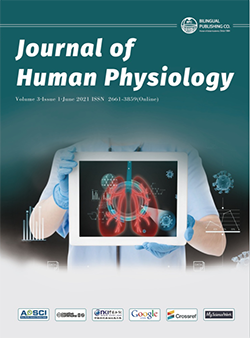Improvement of Regular Exercise on Diabetes Condition of Type II Diabetes Mellitus Elderly Patients
DOI:
https://doi.org/10.30564/jhp.v3i1.3244Abstract
To investigate the effects of 12-week old aerobics and brisk walking exercise on type II diabetes in elderly patients with illness condition, at the same time, after intervention 12 months later, the subsequent movement of patients in the intervention group were followed up, in order to provide a simple and effective, scientific and reasonable exercise prescription for elderly patients. Subjects were selected according to the standard, the sex ratio of 1:1 from 28 over the age of 60 elderly patients with type II diabetes (male and female 14 each), and divided them into intervention group and control group, the control group lived a normal life (without regularity, fitness behavior during the experimental period), the intervention group did aerobics plus walking exercise intervention, two groups of patients were assessed indexes of diabetes before and after the intervention. After 12- week exercise intervention, blood glucose and cholesterol of intervention group decreased significantly, the illness condition of them had improved effectively, while the control group had no obvious change before and after the experiment, after intervention 12 months later, over 85% elderly patients of the intervention group had been in good behavior habits of fitness. Aerobics and walking exercise can improve the illness condition of elderly patients with type II diabetes to a certain extent, think that the old aerobics and rope skipping is a kind of effective and simple fitness behavior, should be targeted according to the condition of patients and health promotion.
Keywords:
Regular exercise; T2DM; Elderly patients; ImprovementReferences
[1] Wild S, Rogers G, Green A, et al. Global GT Analysis of Diabetes: Estimates for the Year 2000 and Projections for 2030[J].Diabetes Care, 2004,27 (5): 1047-53.
[2] Hervs A, Zabaleta A, De Miguel G, et al. Health related quality of life with diabetes mellitus type 2 in patients with diabetes mellitus type 2[J].An Sist Sanitnavar2007, 30 (1) : 45-52.
[3] Zhou YR, Xiao JQ. Clinical study of serum insulin and C-peptide levels in patients with type 2 diabetes mellitus [J]. Laboratory Medicine and Clinical Practice 2013,10 (18) : 2413.
[4] MENG E. The effect of Taijiquan on serum lipid composition and insulin resistance in patients with type 2 diabetes [J]. Chinese Journal of Gerontology, 201,34 (19) : 5360.
[5] Kawamura M, Kawamura M, Kawamura M, et al. The role of diabetes mellitus in the diagnosis and treatment of diabetes mellitus [J]. Int J Diabetologia, 2012, 24 (1) : 69-72.
[6] Colberg SR, Hagberg JM, McCOLE SD. Utilization of plasma glucose is reduced in individuals with NIDDM during mild intensity exercise[J].J Physiol,1996,81(5):35-35.
[7] Tan JZ. Exercise intervention in type 2 diabetes mellitus [J]. Journal of Tien Jin Sport University, 2001,16 (3) : 53-53.
[8] Wang ZR. Evaluation of the effect of exercise intervention on type 2 diabetes mellitus in community [J]. Chin J Clinical Rehabilitation, 2002,6 (15) : 2214.
[9] Tao L L, Fan X B, Deng Y B, et al. Effect of exercise intervention on 36 patients with type 2 diabetes [J]. Clinical Meta, 2004,19 (15) : 867-867.
[10] DUAN Yanping, WALTER Brehm Helmut Strobl, HUANG Zhijian, et al. Physical activity changes in adults: a theoretical construction, questionnaire development and empirical research [J]. Journal of Tianjin Institute of Physical Education, 2012,27 (3) : 204.
[11] Fergamin. Effects of exercise intervention on quality of life in elderly patients with type 2 diabetes mellitus [J]. Sports Science and Technology, 2014,35 (6) : 11.
[12] Colberg S R, Sigal R J, Yardley J E, et al. Physical activity/exercise and diabetes: a position statement of the American Diabetes Association [J]. Diabetes Care, 2016, 39(11): 2065-2079.
Downloads
Issue
Article Type
License
Copyright and Licensing
The authors shall retain the copyright of their work but allow the Publisher to publish, copy, distribute, and convey the work.
Journal of Human Physiology publishes accepted manuscripts under Creative Commons Attribution-NonCommercial 4.0 International License (CC BY-NC 4.0). Authors who submit their papers for publication by Journal of Human Physiology agree to have the CC BY-NC 4.0 license applied to their work, and that anyone is allowed to reuse the article or part of it free of charge for non-commercial use. As long as you follow the license terms and original source is properly cited, anyone may copy, redistribute the material in any medium or format, remix, transform, and build upon the material.
License Policy for Reuse of Third-Party Materials
If a manuscript submitted to the journal contains the materials which are held in copyright by a third-party, authors are responsible for obtaining permissions from the copyright holder to reuse or republish any previously published figures, illustrations, charts, tables, photographs, and text excerpts, etc. When submitting a manuscript, official written proof of permission must be provided and clearly stated in the cover letter.
The editorial office of the journal has the right to reject/retract articles that reuse third-party materials without permission.
Journal Policies on Data Sharing
We encourage authors to share articles published in our journal to other data platforms, but only if it is noted that it has been published in this journal.




 Jiaming Fei
Jiaming Fei

